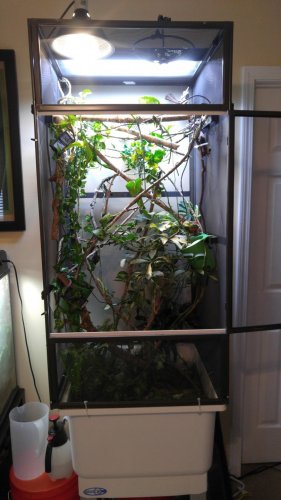jajeanpierre
Chameleon Enthusiast
It's pretty amazing how quickly Veiled Chameleons grow. Al just turned five months a couple days ago and is sitting at 70g. He's working on another shed right now, and with that and moving his enclosure from one wall to another, he's gone off food a bit and is only interested in freshly molted superworms. Hopefully he'll be back to normal once the shed passes.
View attachment 160347
View attachment 160348
He's beautiful. You've done a wonderful job raising him. It is easy to get them to grow big and fast, but it is not easy to get them to develop properly. I wish we saw more veileds on here like your boy without stunted faces and twisted casques and bodies.
As they grow, their appetite slows down. Obesity is such a huge problem with captive, sedentary chameleons, so don't worry about a drop in appetite if all other indicators are he is doing well. I over feed and it is a husbandry mistake that is very hard for me to correct. Almost every one of my chameleons came to me as weak, parasite-ridden, dehydrated and emaciated wild caughts. Being obese isn't the end of the world for the boys, but it will be the kiss of death for my females. It is surprising how little food they really need once they are grown up.
What are you using for a substrate pan?


